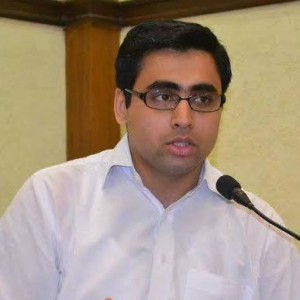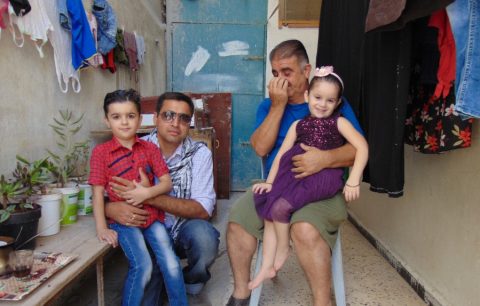
By Manish Rai:
The Syria conflict has sparked the world’s largest humanitarian crisis since World War II. Humanitarian needs continue to rise, population displacements are increasing, and an entire generation of children is being exposed to war and violence, increasingly deprived of basic services, education and protection. The increasing intensity of the war, failing diplomacy and scarce resources make the mission to rehabilitate the refugees a very hard task. Overfilled refugee camps in Turkey, Iraq, Lebanon and Jordan are feeding grounds for disease, conflict and extremism due to poor conditions, overpopulation and interfering forces. Previous attempts to tackle the issue are dwarfed by the rapid increase of refugees, and international aid never seems to be enough, yet makes a difference for those lucky enough to receive it. To know more about the plight of Syrian refugees I visited Zaatari Camp and city of Al-Mafraq and Ar-Ramtha in northern Jordan which are filed with Syrian refugees from the province of Daara, where the revolution started in March, 2011. Zaatari camp is one of the largest Syrian refugee camps which houses more than 100,000 refugees and it is gradually evolving into a permanent settlement. Most of the camp residents I met do not see any immediate solution to the conflict.
Approximately 80 percent of Syrian refugees in Jordan live in urban areas in the north of Jordan such as the border cities of Al-Mafraq and Ar-Ramtha. While the remaining 20 percent live in the Zaatari, Marjeeb al-Fahood, Cyber City and Al-Azraq camps. Northern Jordan feels as Syrian as Jordanian since people from both countries have long lived and married together, crossing the border easily. Of all Syria’s neighbours, Jordan has maintained the most controlled border policy throughout the nearly five-year conflict, and it is arguably the most stable. But it has also accepted a very significant number of refugees. Jordan has the third largest population of Syrian refugees in the world, with 635,000 registered refugees. Despite the horrors they had endured, all the Syrian refugees I met said their dream is to return to Syria. Syria’s neighbouring countries, like Jordan, Lebanon and Turkey, because they share the same religion and culture provided a kind of new home to fleeing refugees. While these countries have been remarkably hospitable, there is little prospect that they will allow the permanent integration of hundreds of thousands of Syrian refugees. As the conflict drags on, it is abundantly clear that large-scale returns of the refugees will not happen anytime soon, but whenever they do return, these movements will bring complex humanitarian, socio-economic and security challenges, with important implications for peace building and post-conflict reconciliation and development.
But one thing is also clear: Syria as a country can’t be rebuilt without the participation of refugees fleeing to neighbouring countries. Syria needs its human capital to again stand on its feet. Syria’s population has shrunk by 20–30 percent, with 50 percent of the population internally displaced and many highly skilled workers and entrepreneurs having left the country. Moreover, the currently low school enrolment rate of children will negatively impact the country’s potential output for years to come. The Syrian Centre for Policy Research (SCPR) estimated in 2015 that the loss of years of schooling by children represents a human capital deficit of $5 billion in education investment. I met with Jalal and his family in Ar-Ramtha. He has three kids but only one of them goes to school as he can’t afford the enrolment of his other kids in the school. Moreover capital flight is also a big hurdle to reviving Syrian commerce and trade whenever are plans for rebuilding the country. Abzayid, a Syrian shopkeeper who owns a shop in Ramtha in partnership with a local Jordanian, says that he sold everything back home in Daara and fled to Jordan with all his savings.
Under the circumstances of a restored peace in Syria, voluntary repatriation as a durable solution will become a viable option. But, for this, a lot of things need to be done before refugees are encouraged to return to their home country. The United Nations and its agencies should create a special relief package for voluntary repatriation, including providing seed capital for businessmen and traders, free schooling for children, assistance for rebuilding houses and vocational training to craftsman. When a refugee returns to their home country they should be received by the UN agencies and not be left at the mercy of the home country government. But this process also needs the continuing support of the international community through the crucial post-conflict phase to ensure that those who make the brave decision to go home can rebuild their lives in a stable environment. But as of now some work can still be started in the promotion of voluntary repatriation, like organizing “go-and-see” visits for refugees, compiling updated information on their country and making them aware about the current state of affairs and effectively monitoring the refugee camps and population, in order to keep track of the refugees wishing to return.
Manish Rai is a columnist covering the Middle-East and Af-Pak regions and Editor of the geo-political news agency Views Around. He can be reached at manishraiva@gmail.com
.jpg)





